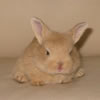
8. Katherine Ashenburg. The Dirt on Clean: an Unsanitized History (New York: North Point Press, 2007)
This popular history of cleanliness and its pursuit is high on my lists of books I must buy soon. I raced through it at a breakneck speed while preparing my CA, and it nearly broke my spirit. The section on medieval hygiene was so good that I truly wondered whether there were any point in continuing my writing!
However, this is a general popular history, and it does leave room for more scholarly and semi-scholarly work. In general, the text lacks footnotes, though there are references listed for the quotations in the back of the book. In addition, the sources for the marginalia are listed at the back, and the bibliography is extensive. The index is also excellent.
Ashenburg does a good job with the Greek and Roman baths, as well as the early Christian conflict between standards of self-denial and reasonable cleanliness. She has the best general section on the mikveh in any of the books I consulted, though it is nowhere near the coverage in Judaism in Practice: From the Middle Ages Through the Early Modern edited by Lawrence Fine. Ashenburg does good work with the medieval, renaissance, and baroque periods, though her chronology is not always clear-- however, she's quite solid on the history of the bidet.
The Dirt on Clean includes a goodly section on the modern development of cleaning standards, though I would say "Clean: A History" is better on some of the 19th c. Philosophy. Ashenburg's focus, however, is more American-- the Beecher sisters' The American Woman's Home is a key text for her. She also gives great attention to the post 1900 and especially post 1950 waves of demonization of the body and its smells. She makes great hay with Horace Miner's 1956 article "Body Ritual among the Nacirema," American Anthropologist, which in anthropological humor satirized our American grooming habits.
Unfortunately, this may be the only flaw I see in the book. Ashenburg is clearly pushing a cause here, similar to that of the Hygiene Hypothesis: the idea that we'd all be healthier and more liberated if we worried less about dirt, germs and cleanliness than we do now. Not that I disagree with her, but she pushes her agenda hard enough that it will cast doubts on this work.
The text is readable, full of useful snippets, and a lot of fun as well as educational. There's definitely a sense of "things you never knew, or thought you knew that were wrong" here. Lots of useful illustrations, as well as the marginalia, spice things up. I'd consider it a good purchase for libraries, too, though I think the reading level is at least high school.